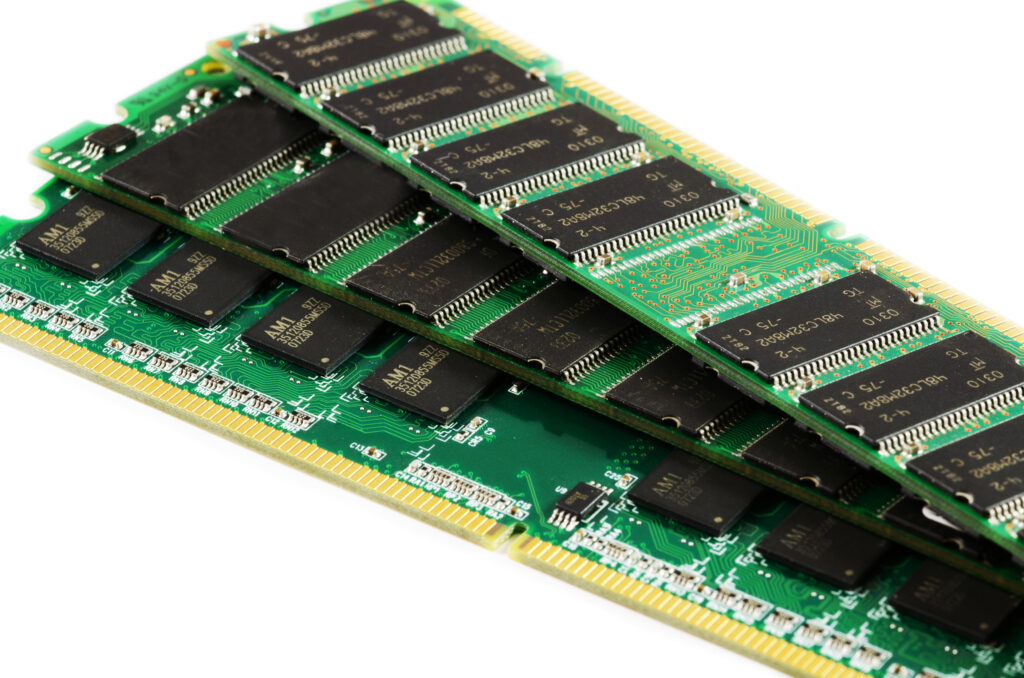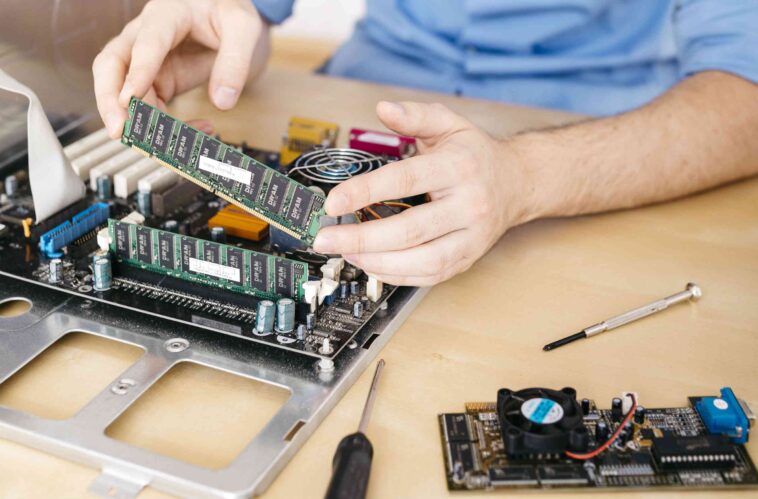This article will guide you on how to choose the best RAM for your computer to enhance its performance. But in order to do so, we must first learn all about what a RAM is and how it affects the performance of your system.
If you are experiencing a slow performance by your computer, it can be an indication of many problems that may have different root causes. However, most of the time, the problem is related to the shortage of RAM in your computer. When talking about performance, RAM plays a key role in determining how well your computer works.
What is a RAM?
The acronym RAM is used to reference the computer’s Random Access Memory. It is used by the CPU and GPU to store temporary data while performing computer functions. In simpler words, you can call it the short-term memory of a computer. The data stored in RAM can be recalled without accessing the hard drive.
It is continuously refreshed and overwritten. Because of its short-term storage, it is way faster than any long-term storage device. However, it only holds data while the computer is functional, after which it erases all the temporary data.
Having a powerful RAM that can hold the right amount of memory improves the computer’s performance drastically. So, basically, a RAM is what makes your computer perform functions faster and more smoothly.
Why do You Need to Upgrade Your RAM?
There are some applications that consume a lot of space on the system RAM such as your web browser. When you use a web browser, it allocates different memory to each new tab, thereby relying heavily on the RAM. In such cases, upgrading your RAM is a definite way to improve your computer’s performance.
If you are experiencing a slowed-down performance by your machine, it is most likely because your RAM is being overtaxed. A good way to confirm your suspicions is by checking the availability of RAM in your Task Manager.
However, there is a slight difference between a desktop’s RAM and a laptop’s RAM. Desktops use DIMM which is the acronym for Dual In-Line Memory Module while Laptops use SO-DIMM, which is the acronym for Small Outline Dual In-Line Memory Module.

How to Check Which RAM is Compatible with Your System?
Before you decide to upgrade your RAM, you must know what kind of RAM you need to fulfill your requirements. In order to find out which RAM is best compatible with your machine; you need to follow these few steps.
- Go to the explorer bar on your Windows Start menu and type in ‘System Information’.
- Open the app.
- Look for System Summary, underneath which you will find Processor.
- Open this up to find out your specific processor and type.
- Use this information to search on the manufacturer’s website regarding your specific processor. The website will tell you which RAM is compatible with your processor.
Some of the factors that can help you better understand what kind of RAM to choose are:
- The clock speed of RAM is measured in the units MHz.
- The faster RAM speed you choose to get, the more it will boost your system’s performance.
- Even though you might want the best and the fastest RAM, it is important to remember that CPUs and Motherboards too have limitations. So, there is only a limit to the kind of RAM that you can buy. Most modern CPUs go with RAMs from 64GB to 128GB.
- You might first want to consider the main purpose of your system. As some applications require more powerful RAMs, you might need to decide what you are going to use your system mainly for and then go to search for a RAM that serves your purpose.
- Always remember that motherboards have a limited number of DIMM slots (Dual In-Line Memory Module slots) and that is where your RAM will be plugged.
How Many Different Types of RAM are There?
There are many different types of RAM but the most common ones are one of these:
- DDR (double data rate)
- DDR2 SDRAM (double data rate synchronous dynamic random-access memory) – found in very outdated machines between the years 2003 and 2007
- DDR3 SDRAM (double data rate type synchronous dynamic random-access memory) – can be found in devices made between 2007 and 2015
- DDR4 SDRAM (double data rate fourth-generation synchronous dynamic random-access memory) – currently used in computers and laptops after 2015
- DDR5 SDRAM – estimated to arrive in markets by late 2021and will be a breakthrough in impacting heavy applications and processes, most likely computer design, video processing, encoding, etc.
Most modern computers these days use DDR4 while motherboards that are compatible with DDR3 are becoming outdated. Therefore, make sure that you buy a RAM that will be supported by your motherboard as DDR3 won’t be compatible with DDR4 devices and vice versa.
Other factors:
Some other factors that influence the kind of RAM you should choose for your computer are:
- Latency (Timing): As far as the latency of a RAM is concerned, a lower number of digits indicates better performance. Typically, there are four numbers that are separated by dashes.
- Frequency (Speed): Speed is important when it comes to RAMs. The faster your RAM is, the better your system will perform. Generally, 64GB to 128GB RAMs are supported by most CPUs but if you are going to use your machine for heavy gaming, you must opt for a RAM that is around 3000MHz as a middle ground.
Does the Operation System Limit the RAM?
The operating system that you are using can affect the amount of RAM that can fit into your computer. Here is a list of the maximum amount of RAM windows can support based on their operating systems:
- Windows 10 Home: 128 GB
- Windows 10 Pro: 2 TB
- Windows 8.1 Home 64-bit: 128 GB
- Windows 8.1 Pro 64-bit: 512 GB
- Windows 8.1 Enterprise 64-bit: 512 GB
- Windows 8.1 32-bit: 4 GB
- Windows 7 Home Basic 64-bit: 8 GB
- Windows 7 Home Premium 64-bit: 16 GB
- Windows 7 Pro 64-bit: 192 GB
- Windows 7 Enterprise 64-bit: 192 GB
- Windows 7 Ultimate 64-bit: 192 GB
- Windows 7 32-bit: 4 GB
What is the Difference Between a Single and Dual RAM?
The key difference between a Single Channel RAM and a Dual Channel RAM is that a Single channel uses one module while a Dual channel uses two modules of RAM.
These channels work in a similar fashion as a roadway. In a single lane, for example, there are more chances of experiencing a traffic jam as many vehicles are clustered on the same path. While on a two-way road, the traffic flow is much smooth and fast.
Similarly, in a Single channel RAM, you are using one large capacity module and the data that you need to transfer between the CPU and the RAM may be crammed if you try to do it at one time. Using a Dual channel allows you to transfer that data using two capacity modules, thereby effectively transferring double amounts of data.
If you are using your system for gaming purposes, a Single channel RAM will do but for transferring more data in a professional environment, a Dual channel RAM is a good pick. A Dual or Quad channel RAM can also help prevent bottlenecking (congestion in an assembly line).
Final Verdict
Typically, upgrading a RAM is not so hard when you have full knowledge of the type of RAM you want to upgrade it to. However, if you plan on building a budget system, choose the higher capacity RAM with dual channel.
It is always better to have two modules for a better and smooth workflow of data than one. An 8 GB RAM should suffice for gamers as it will be enough to suit their needs but for more efficient programs that need to transfer high-end data, 16 GB RAM is a better option.
Now that you have a better understanding of all the factors that need to be kept in mind, we hope it will be easier to choose a RAM that is compatible with your hardware and also with your requirements.







